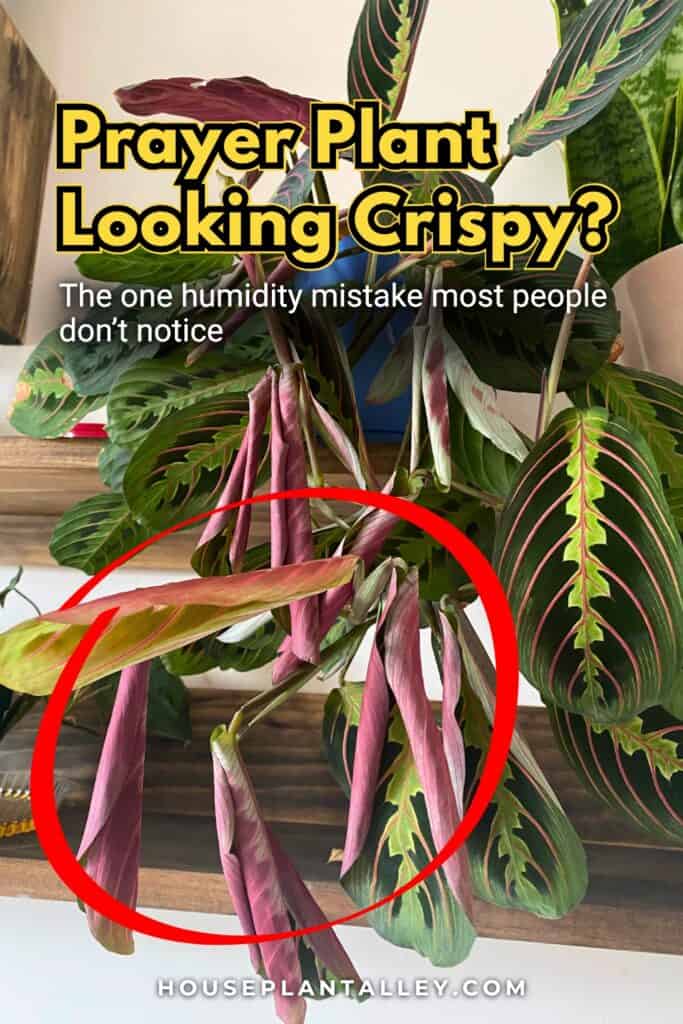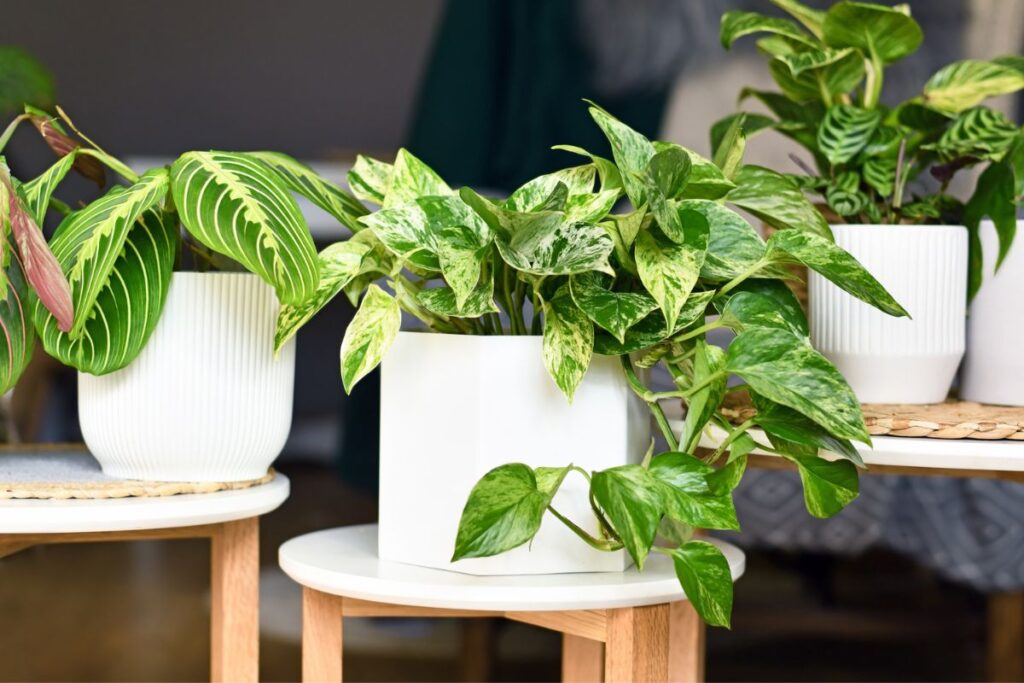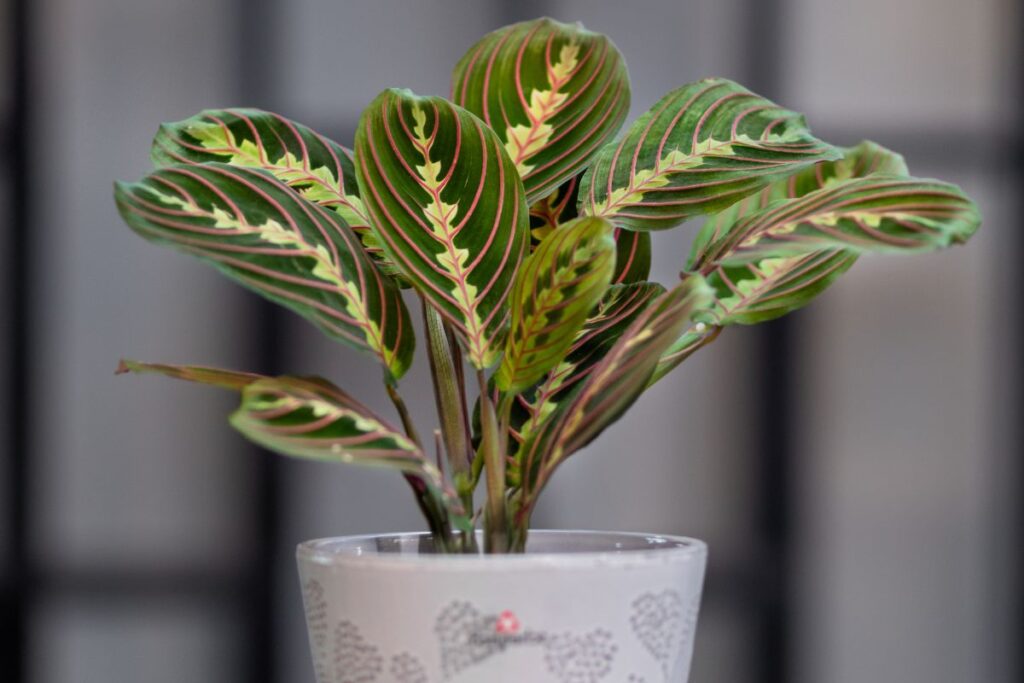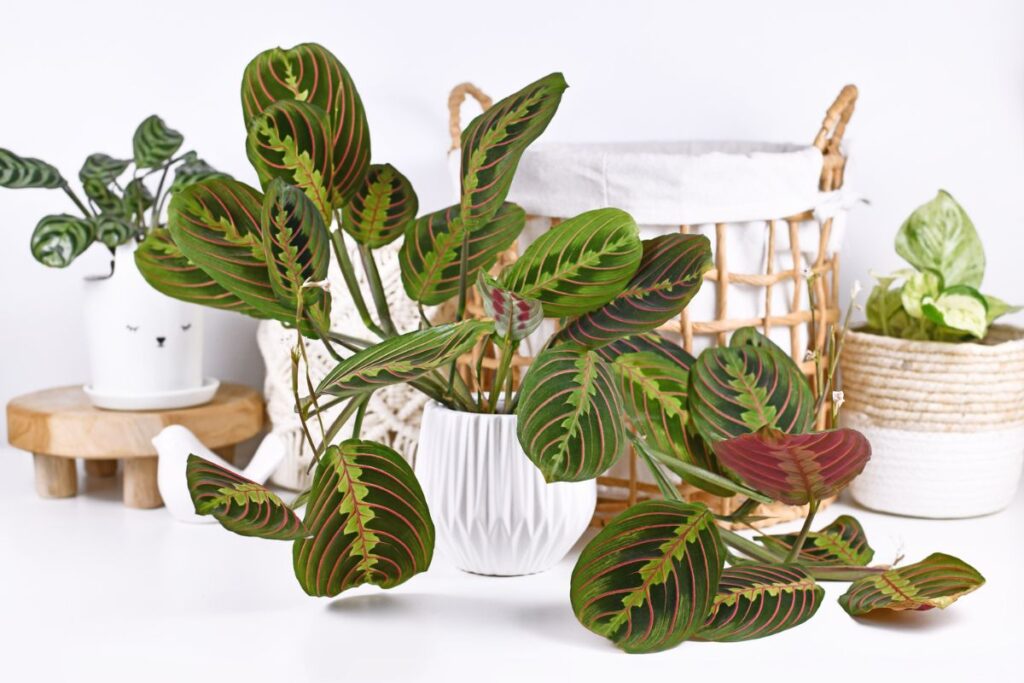Prayer plants are a unique and beautiful species of indoor plant that add a touch of nature to any home. As with all plants, it’s essential to understand the needs of your prayer plant in order to keep it healthy and flourishing. One key factor is humidity – do prayer plants like higher humidity? In this article, we’ll answer the question “Do prayer plants like humidity?” as well as explore other factors related to caring for your prayer plant, such as how to water it and when. We’ll also look at the difference between top-watering and bottom-watering techniques. With these tips, you can ensure your prayer plant will thrive in its new home!

Contents
Do Prayer Plants Like Humidity?
Yes, prayer plants like humidity. They are native to tropical regions where the air is humid, so they thrive in environments with high levels of moisture. If the air in your home is dry, you may notice that the leaves of your prayer plant start to curl or brown. This is a sign that the plant needs more humidity. With proper humidity levels, your prayer plant will grow healthy and lush, with vibrant, colorful leaves.
How To Raise The Humidity Surrounding Your Prayer Plant
To raise the humidity around your prayer plant, try the following:
- Misting: You can mist your prayer plant leaves with water to increase the humidity level around the plant. Use a spray bottle to mist the leaves with water once or twice a day.
- Grouping: Grouping plants together can increase the humidity level. Place your prayer plant near other plants to create a mini greenhouse effect.
- Pebble tray: You can place a tray of pebbles filled with water below your prayer plant. The water will evaporate, increasing the humidity level around the plant.
- Humidifier: You can use a humidifier to increase the humidity level in the room where your prayer plant is located.
- Bathroom: Your bathroom may be the most humid room in your house. You can place your prayer plant in the bathroom or near the shower to increase the humidity level.

How to Water Your Prayer Plant
To keep your prayer plant happy, you should give it a good soak every few days – just make sure to empty any excess water after 30 minutes! Caring for dry soil is important when watering your prayer plant, as overwatering can cause damage. To determine if the soil needs more water, use your finger or a moisture meter to check the top inch of potting soil. If it still feels moist to the touch, wait at least a few more days before giving it another drink.
Optimal humidity levels are beneficial for prayer plants so they can thrive. When watering, try to soak the soil evenly and thoroughly. Doing this will help keep the humidity levels consistent in its environment. Additionally, fertilizing tips and light requirements are also important factors when caring for this type of plant. It’s best to apply fertilizer once every couple of months during spring and summer months while providing enough bright indirect light without direct sun exposure during these times as well.
Finally, remember that over-watering is just as detrimental to your prayer plant’s health as under-watering is! Too much water can cause root rot which will result in wilting leaves and eventual death of the plant if left untreated. Be mindful of how much water you’re giving your prayer plant so that you don’t drown it instead of helping it thrive!

When to Water Your Prayer Plant
Watering your prayer plant regularly is key to keeping it healthy, so check it every 4-5 days and look out for signs of droopiness. In addition to checking the soil moisture, you should also take into account the light levels that your plant receives, as this will affect how frequently it needs watering. Pay attention to factors such as pot size, fertilizer needs and air circulation that can all affect how quickly the soil dries out. As with any plant, using a moisture meter is an excellent way to get a better understanding of what’s going on beneath the surface.
In winter when growth slows down and temperatures are cooler, reduce watering accordingly – allowing more time for water to evaporate from the soil or compost before you re-water. During warm summer months however, when your prayer plant may be growing at a faster rate than usual, make sure you keep an eye on its watering needs as this could mean that it requires more frequent hydration.
It’s important to give your Maranta leuconeura just enough water without overdoing it; too much can lead to root rot which can cause irreversible damage! To help prevent this from happening make sure there are adequate drainage holes in the bottom of its pot and never leave standing water in its saucer after watering has finished.

Top Watering or Bottom Watering
Discover the pros and cons of top watering versus bottom watering your plants to determine which method will best suit your needs. Top watering is the typical way people think of when it comes to watering plants – pouring water onto the top surface of the soil. On the other hand, bottom watering involves placing the pot into a container of water and allowing the soil to absorb moisture. Both methods have their own advantages and disadvantages that depend on factors such as watering frequency, soil type, light levels, water quality, and even plant size.
When it comes to top watering, it’s a faster process than bottom watering since you don’t need to move the plant around or monitor it for too long. This method also flushes out minerals that can build up in the soil over time. However, with this technique, there is a higher chance of overwatering if not done correctly due to difficulty in controlling how much water is being poured into one spot.
Bottom watering has its own benefits; for one thing, it eliminates splashing water onto leaves that could cause white spots as it dries or allow the fungal disease to develop. Moreover, this technique also helps prevent fungus gnats due to unevenly moist soil between the top and lower parts of potting mix. The main downside here is that bottom-watering takes more time compared with top-watering as you need to wait 10-30 minutes for proper absorption depending on different factors like pot size or drainage hole number.
Overall both techniques are great options but before deciding which one works better for you make sure you consider all variables including those previously mentioned like frequency, type of soil, or light levels so your plants can get just enough amount of water they need without any risk of overwatering or underwatering them!
Conclusion
Prayer plants need a lot of humidity to thrive, so it’s important to water them correctly. Pay attention to the soil – when it feels dry, it’s time to water your prayer plant. Whether you choose top or bottom watering is up to you, but make sure you don’t overwater! By understanding the needs of your prayer plant and providing the right conditions for growth, you can ensure that it stays healthy and happy. With proper care and attention, you’ll have a beautiful prayer plant in no time!
